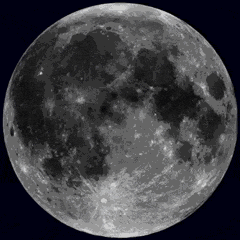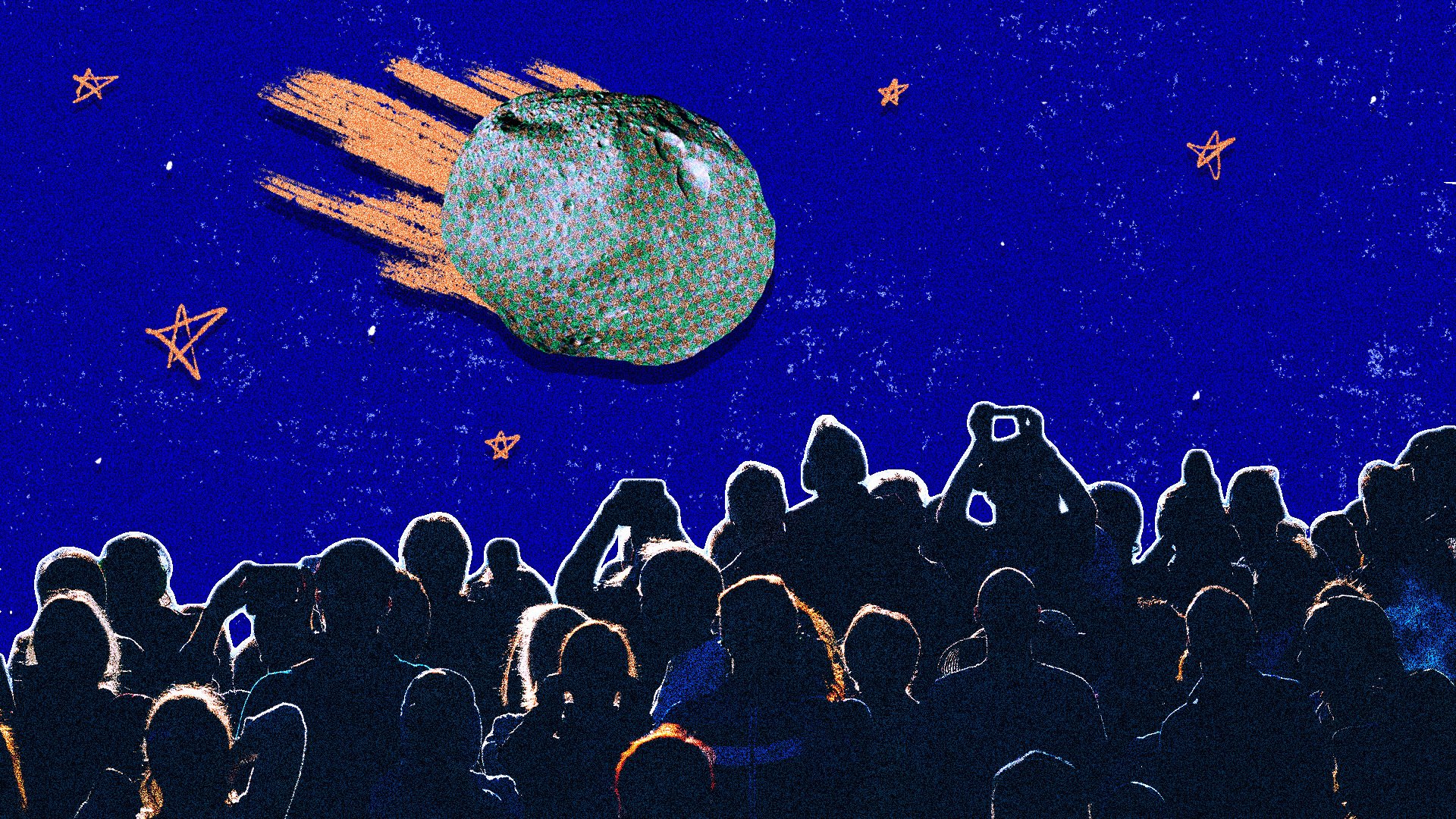
This story, originally published in June 2021, has been republished as part of Mashable’s “Space Rocks” series.
On April 13, 2029 (which happens to be Friday the 13th), something unsettling will happen.
A decent-sized asteroid, the 1,100-foot-wide Apophis, will pass so close to Earth it’ll be visible in the sky from certain places. Crucially, the giant rock will not strike our humble planet. But it will pass closer than 20,000 miles from the surface, which is closer than where some of the United States’ most prized weather satellites orbit.
Asteroids like Apophis hold a fascinating place in our existence: Big impacts are at once terrible threats to our lives and potentially the habitability for many species, but they’re also extremely rare and irregular events. Yet the internet — awash with clickbait — likes to incessantly warn of incoming threats with misleading headlines like “Asteroid heading our way day before presidential election,” “Should you be worried about the ‘potentially hazardous’ asteroid passing by Earth today?,” and “Massive asteroid will swing by Earth after Valentine’s Day.”
These stories aren’t about real danger; many of the objects pass millions of miles away. Rather, the stories are about sensationalism.
Mashable spoke with NASA’s Planetary Defense Officer, Lindley Johnson, who understands, perhaps better than anyone on the planet, what will happen when a big one comes. If a serious threat to either a region on Earth, a large swathe of Earth, or perhaps the entirety of Earth, is truly on its way — and astronomers know about it — so will you.
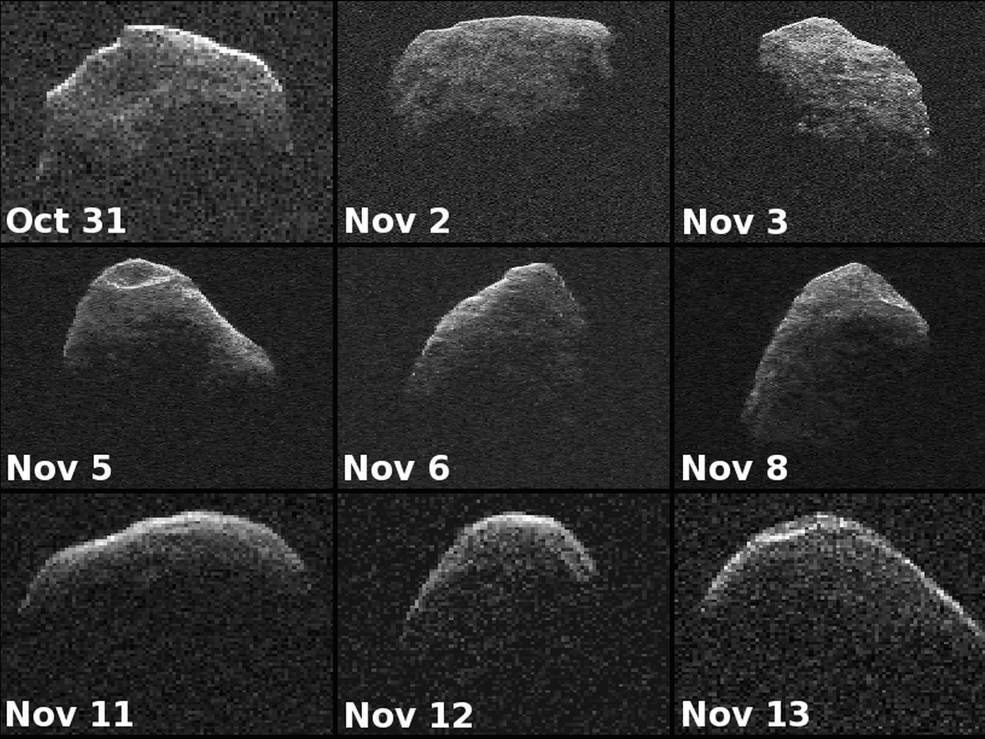
Credit: NASA/JPL-CalTech
The dangerous rocks
NASA created its Planetary Defense Coordination Office in early 2016, with a mission to provide “timely and accurate information to the government, the media, and the public on close approaches to Earth by potentially hazardous objects (PHOs) and any potential for impact.”
Though sensationalist media stories about incoming asteroids are many, NASA hasn’t ever sounded the alarm about a dangerous asteroid bound to impact Earth, or a very worrisome approach.
“We have never actually issued a warning,” said Johnson. (But they have informed the public about what some asteroids of interest are doing.)
“We have never actually issued a warning.”
Yet this planetary defense office exists because, at some point, a significant impact is inevitable (unless we build technologies to successfully deflect threatening objects.) On June 30, 1908, an asteroid, some 120 feet (37 meters) wide entered the atmosphere and then blew up over forested Siberia. Called the “Tunguska Event,” the resulting shockwave mowed down trees. People 20 miles away were “thrown into the air.” Forty miles away, the blast threw a man from his chair.
Such a blast could harm or devastate an urban area today. “That would be a serious event,” said Johnson. But, he added, “Today there is a strong possibility that we would detect it beforehand.”
NASA and other agencies do detect objects much larger, and consequently much more dangerous, than the Tunguska rock. Using big telescopes, NASA’s Center for Near Earth Object Studies looks for asteroids and comets (called near earth objects, or NEOs) that “enter Earth’s neighborhood,” meaning coming within 45 million kilometers (some 28 million miles) of Earth’s orbit. The rocks of particular concern are labeled “potentially hazardous asteroids.” This means they come within about five million miles of Earth. (For reference, the moon is on average some 238,855 miles away.)
NASA has spotted a majority (over 90 percent) of the biggest boys, meaning rocks larger than one kilometer (0.6 miles), like the roughly six-mile-wide behemoth that wiped out the dinosaurs. Yet many dangerous rocks remain. Scientists estimate that two out of three NEOs wider than 460 feet — rocks at least around some three times larger than Tunguska — haven’t been found, according to NASA’s planetary defense office.
Even much smaller rocks, of more than some 30 feet (10 meters), are still threatening, as the surprise 56-foot (17-meter) rock that exploded over Russia and blew out people’s windows in 2013, proved.
What will happen when a threatening rock is actually en route to Earth, and detected?
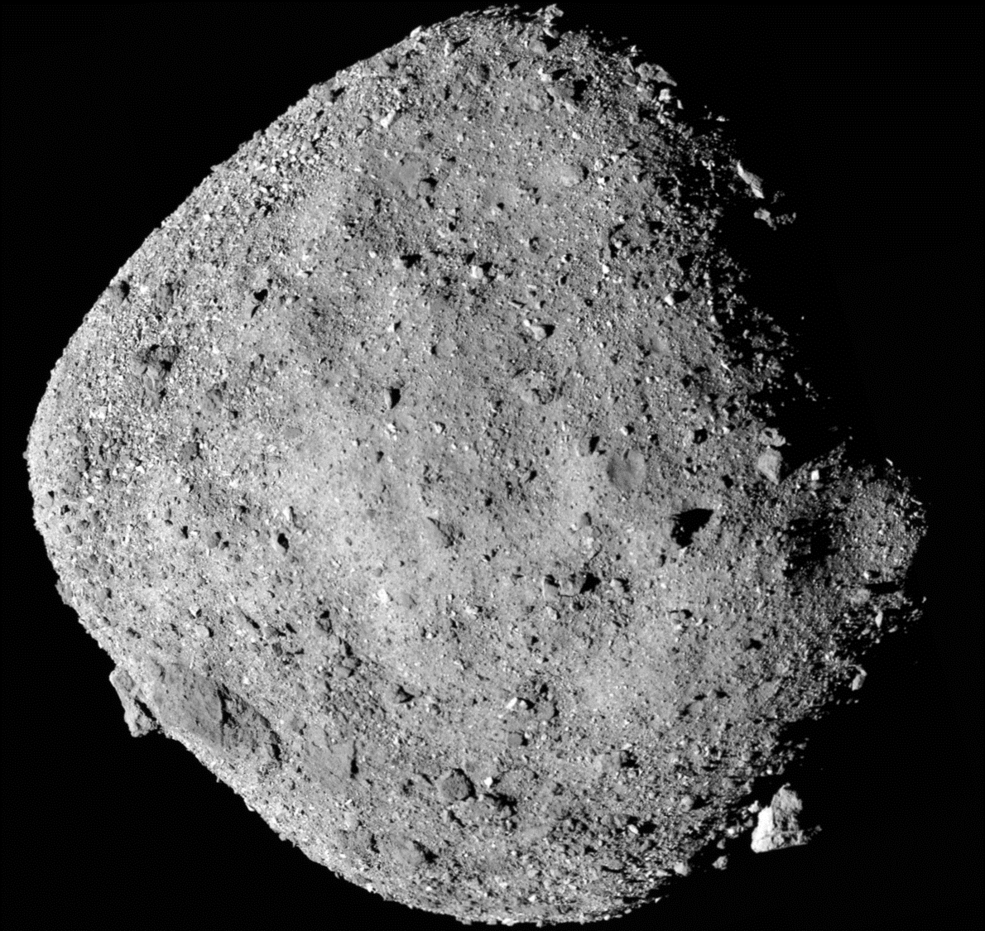
Credit: NASA
The warnings
There are generally two types of warnings: notification of a very close encounter and notification of a potential impact. For either of these, you’ll know they’re legitimate because “NASA has actually said something about it,” said Johnson.
1. Close encounter
A close encounter means a space rock isn’t going to strike Earth, but NASA thinks it’s still deserving of the public’s attention, explained Johnson. It could be as small as a 30-foot (10-meter) rock, or it could be something bigger like Apophis. Other people might spot the close encounter of the rock (as all known NEO trajectories are posted online) and then announce or publish news of the unsettling flyby earlier than NASA. But that’s OK. The agency will take at least a few hours to verify such results.
“Our goal is not to be the first to announce something, but to be the ones that provide the best information available,” explained Johnson.
2. Potential impact
If NASA detects a possible impact — something larger than around 30 feet across (10 meters) with a greater than one percent chance of hitting Earth — things get serious.
Johnson’s office will give warning notifications to NASA to provide the White House, Congress, and government agencies. Public warnings won’t simply be in the form of a NASA press release, tweeted out and posted online. “At that point the White House takes the lead on new information being released,” said Johnson. “It becomes a national emergency event,” he added. FEMA would have to prepare for a disaster if an impact on U.S. soil were likely.
NASA, however, won’t be working alone. They’ll share information with their close asteroid monitoring partners, like the European Space Agency and the UN-recognized International Asteroid Warning Network (IAWN). (For this story, scientists at the IAWN didn’t comment, but suggested we speak with NASA’s Johnson.)
“It becomes a national emergency event.”
A crucial part of this process is telling the White House and other government leadership not only that an impact is likely (or possible), but what an impact will do. Many factors are at play, notably the size and composition of the object. “Will it detonate in Earth’s atmosphere, or make it closer to the ground?” asked NASA’s Johnson. “We can advise leadership as to what might be faced should the asteroid impact the planet.”
The Tunguska rock, heating up as it traveled tens of thousands of mph through Earth’s atmosphere, exploded. In stark contrast, a larger asteroid (some 100 to 170 feet wide) survived the atmospheric plummet and left a 600-foot-deep crater in Arizona 50,000 years ago. “A similar-size impact event today could destroy a city the size of Kansas City,” David Kring, an impact expert at the Lunar and Planetary Institute, told NASA this year.
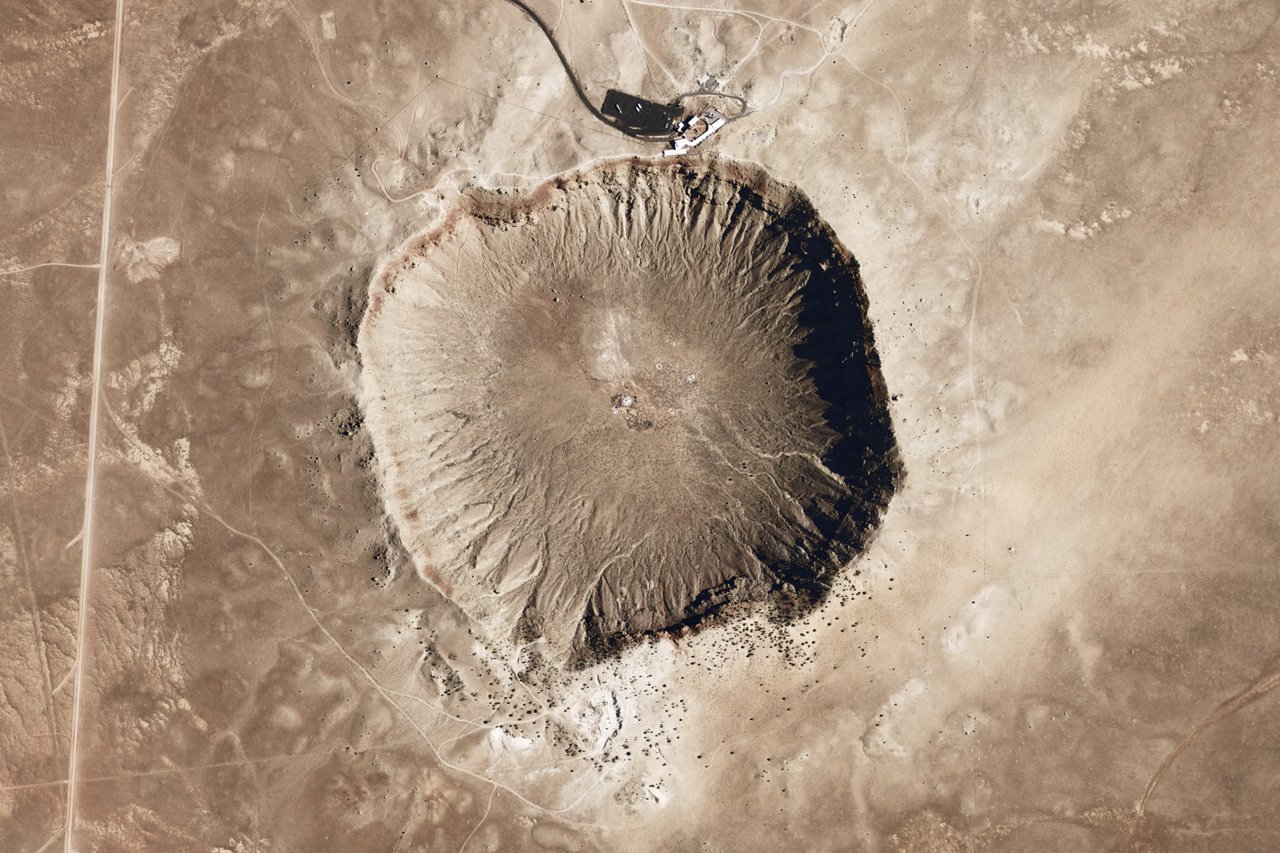
Credit: USGS
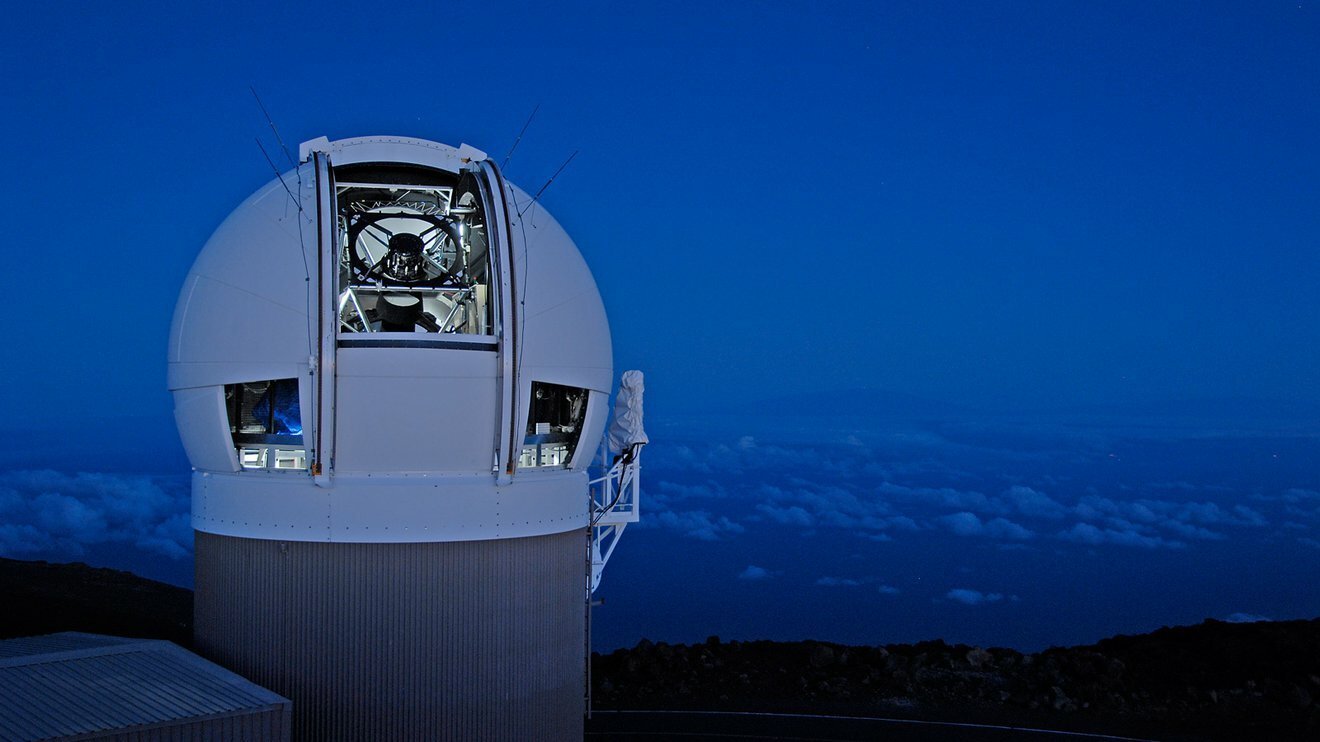
Credit: University of Hawaii Institute for Astronomy / Rob Ratkowski via Nasa
If it should pass that a sizable asteroid is destined for Earth, NASA astronomers and orbital modelers will run thousands of simulations, somewhat similar to weather or hurricane prediction, to forecast where it’s likely to land. Fortunately, Earth is an ocean world, with seas covering 71 percent of the planet, so there’s a good chance many rocks won’t pummel land. (Though if a rock is big enough, it might not matter where it lands.)
Astronomers are finding these rocks. Taxpayer dollars are at work as NASA discovers about 500 asteroids over 460 feet wide — enough to cause at least major regional destruction — each year. (As of June 8, 2021, 9,677 of an estimated population of some 25,000 of these 460-foot-plus NEOs have been found).
Completing the survey is vital. In 2019, the “football field-sized” asteroid 2019 OK surprised astronomers. It zipped within some 40,000 miles of Earth.
“There’s still a lot of stuff out there,” said Johnson.
